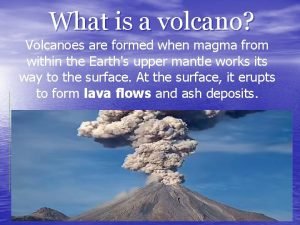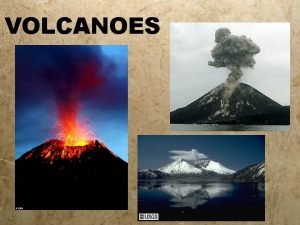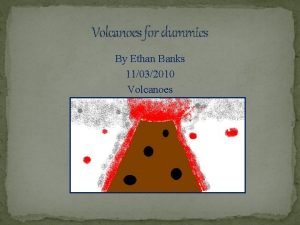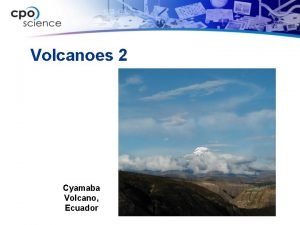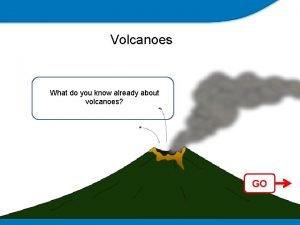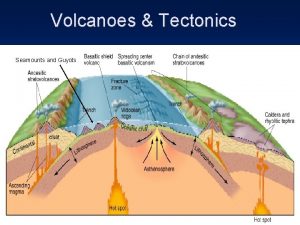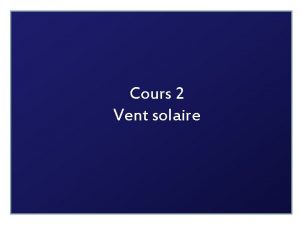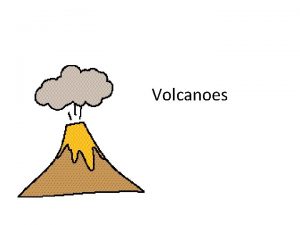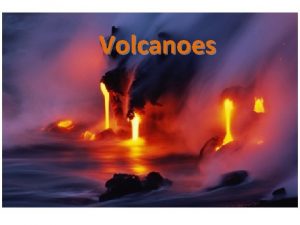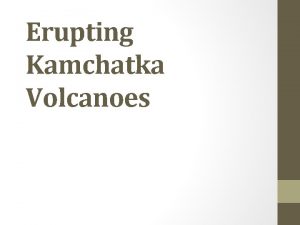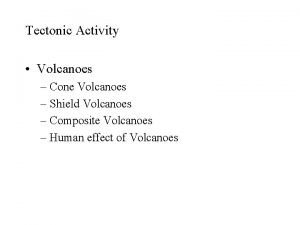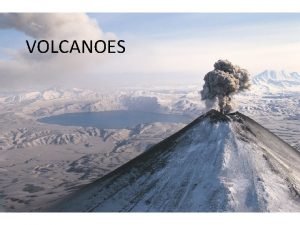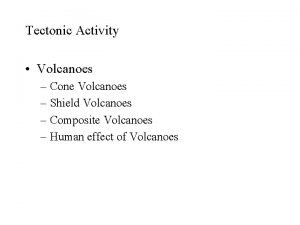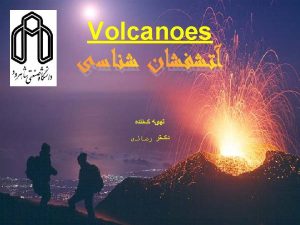Volcanoes Key Terms Vent lava erupting through crack










- Slides: 10

Volcanoes

Key Terms � Vent- lava erupting through crack/ hole in the crust � Crater- bowl shaped depression at the top of the volcano � Caldera- up to 50 km forms when part of volcano collapses � Tephra- rock fragments thrown into the air � Pyroclastic flow- the flow of material down the side of the volcano � Lahar- mudflow with volcanic debris

Formation of a volcano � 1. lava erupts through a vent � 2. lava cools and hardens around vent � 3. slowly builds up walls of volcano

Volcanic material �Sizes vary • Dust <2 mm • Ash > dust, but < 2 mm in diameter • Lapilli 2 -64 mm (little stones in Italian) • Tephra up to size of a small building �May be blown up to 10 km into the air �Pyroclastic may move down the volcano up to 200 km p/h �Creates lahar when mixed with mud �May exceed 700 C

�Forms Types of volcanoes Shield Volcano out of non explosion eruptions. �Has broad slight slopes �Build layer by flowing lava �Straight sides �Quiet eruptions Mauna Loa in Hawaii

Cinder cone volcano �Formed out of explosions and material falling around vent �Steep sides �<1000 m high �Contains large amounts of silica, water, and gas § Small in comparison Lava Butte in Newberry National Volcanic Monument, Oregon

Stratovolcano �Formed layer upon layer of mostly viscous magma �Relative steep sides �A volcano composed of both lava flows and pyroclastic material. �Very large �Highly explosive

Convergent volcanisn �Occur due to plates moving into each other �Magma forced upward due to additional material being subducted �Ex. Pacific ring of fire

Divergent volcanism � Mostly occur along ocean ridges � Caused by plate separation forming new ocean floor (through the process of seafloor spreading) � Ex. Mid Atlantic ridge

�Unusually Hot Spots hot regions of the mantle near the crust �Will dissolve into the crust (lithosphere) �May be formed by plumes of heat close to the core
 Perbedaan hot lava dan hot lava volcano
Perbedaan hot lava dan hot lava volcano What are plutons that cause overlying rocks to bow upward
What are plutons that cause overlying rocks to bow upward Like terms and unlike terms in polynomials
Like terms and unlike terms in polynomials Unlike terms
Unlike terms How volcanoes are formed
How volcanoes are formed How are volcanoes classified
How are volcanoes classified Volcanoes for dummies
Volcanoes for dummies Cotapoxi
Cotapoxi How are volcanoes made
How are volcanoes made What do you already know about volcanoes
What do you already know about volcanoes Three main ways volcanoes are created
Three main ways volcanoes are created




